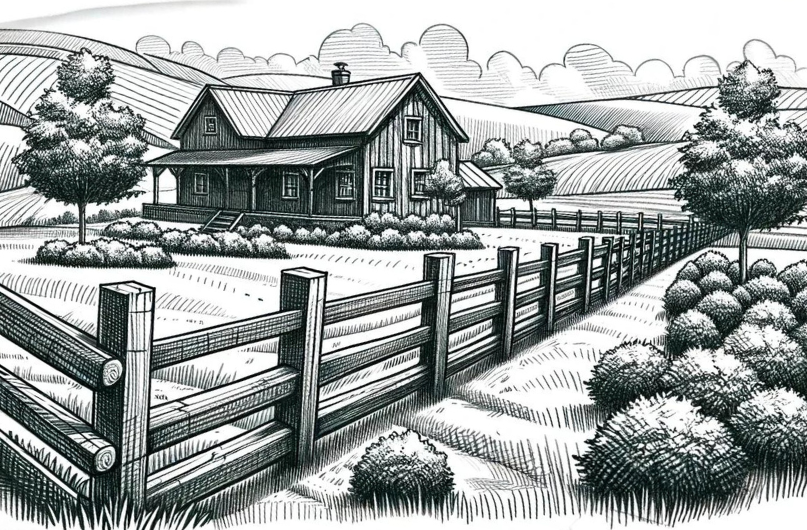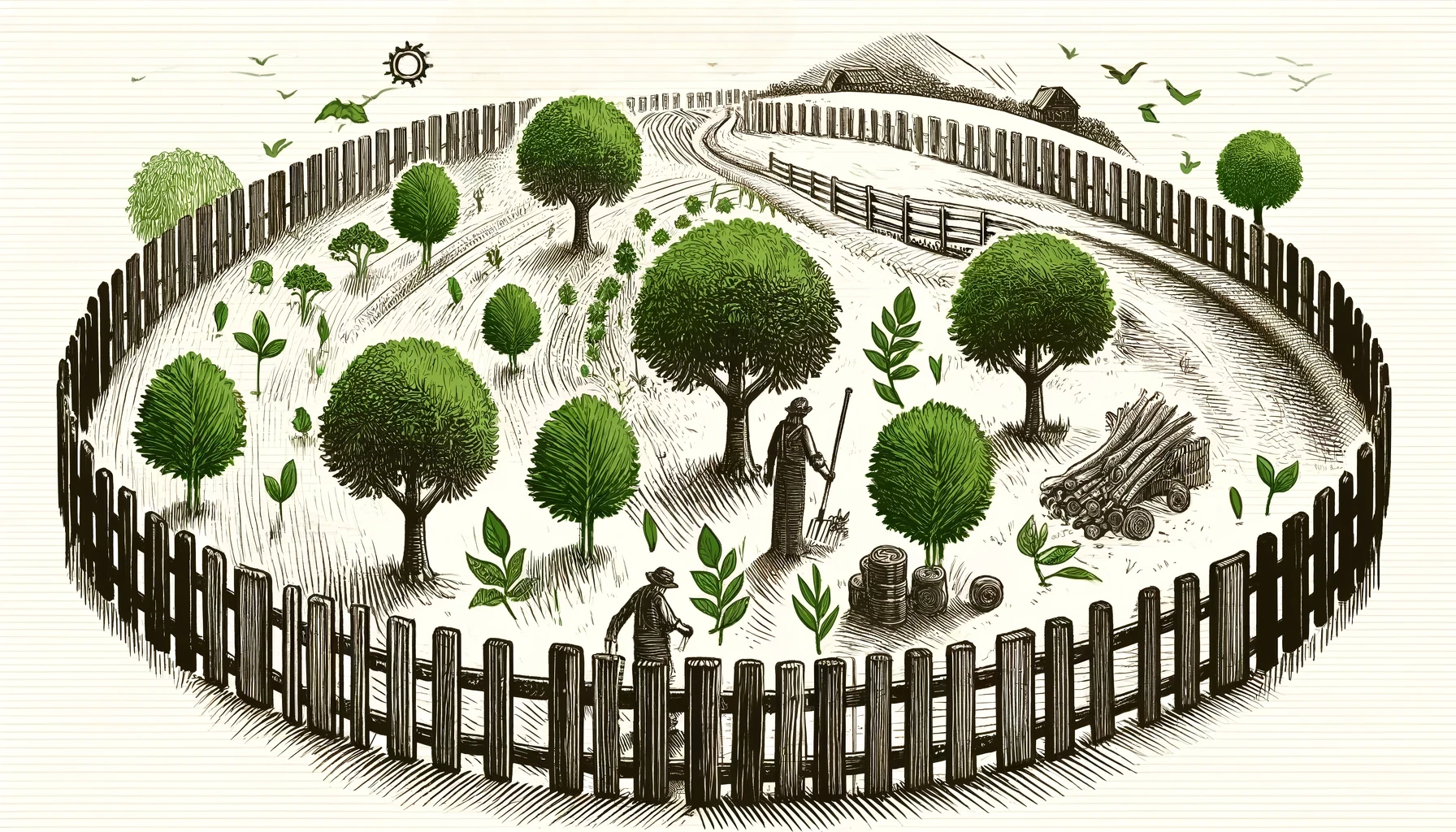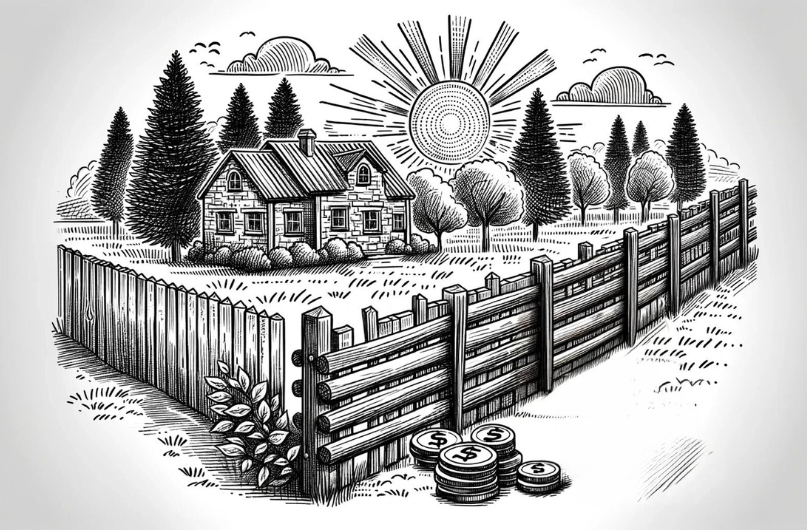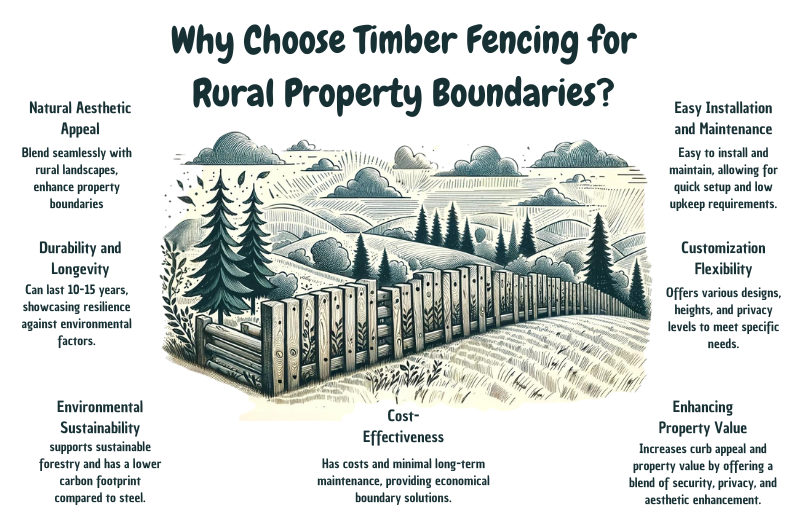Exploring timber fencing for your rural property’s boundaries offers a blend of natural beauty, sustainability, and cost-effectiveness you can’t overlook. It integrates seamlessly with the landscape, enhancing your property’s aesthetic while being environmentally friendly. Timber is a renewable resource, supporting sustainable forestry practices and boasting a lower carbon footprint than steel. Not only does it require minimal maintenance, but it’s also durable, able to withstand various weather conditions with proper care. The installation and upkeep are straightforward, making it a practical choice for rural settings. Plus, its flexibility in design allows you to customize it to fit your specific needs. Learn how timber fencing can transform your property’s boundaries into a picturesque landscape.
Main Points
- Timber fencing enhances the natural aesthetic appeal of rural properties, blending seamlessly with the landscape.
- It offers durability and longevity, lasting 10-15 years with proper maintenance.
- Timber is an environmentally sustainable option, supporting responsible forestry practices and having a lower carbon footprint.
- Cost-effective due to minimal maintenance needs and ease of repairs, providing long-term savings.
- Provides customization flexibility, allowing for various designs and heights to meet privacy and security needs.
Natural Aesthetic Appeal
Timber fencing not only offers a natural and classic appearance that seamlessly blends with rural settings, but it also enriches the aesthetic charm of property boundaries through its customizable features. This aspect of timber as a material is what imbues rural properties with a sense of timeless beauty and authenticity. The inherent flexibility in design allows you to tailor your fencing to fit the unique character of your landscape, ensuring that the natural look enhances, rather than detracts from, the rural charm.
Delving into the specifics, the customization of height and design isn’t merely about enclosing a space. It’s about creating a visual dialogue between the built environment and the natural world. In rural settings, where the beauty of the landscape is paramount, timber fencing acts as a frame that accentuates the view, not an obstruction. This ability to blend and adapt makes timber fencing a sustainable choice for those looking to maintain the ecological and visual harmony of their property.
Choosing timber for your property’s boundaries goes beyond practicality; it’s a commitment to sustaining the rural charm and timeless beauty of your landscape. It’s an investment in an aesthetic that celebrates the natural over the artificial, ensuring that your property not only blends into its surroundings but elevates them.

Durability and Longevity
While the natural beauty and customization of timber fencing improve the aesthetic of rural properties, it’s important to also consider its durability and longevity. Timber fencing, when properly maintained, can offer a lifespan of 10-15 years. This period demonstrates a decent durability range for rural property boundaries, considering the material’s natural composition and susceptibility to environmental factors.
The key to maximizing timber fencing’s lifespan lies in its resistance to weathering. Regular maintenance, such as applying protective sealants, can greatly strengthen its defense against rot, a critical step in prolonging its durability. However, it’s important to acknowledge that timber is prone to warping and cracking as part of its natural aging process. These characteristics can affect longevity, necessitating more frequent repairs and replacements compared to composite materials.
Despite these maintenance requirements, timber fencing’s classic appearance and natural resilience make it a viable option. It’s vital to weigh these factors carefully, understanding that while timber may not offer the same longevity as composite options, its environmental adaptability and proper care can extend its life, making it a sustainable choice for those committed to its upkeep.
Environmental Sustainability
Choosing timber fencing for rural property boundaries not only improves aesthetic appeal but also greatly contributes to environmental sustainability. When you opt for timber fencing, you’re selecting a material that’s not just beautiful but deeply rooted in sustainable practices. Timber is a renewable resource, meaning it can be replanted and regrown, ensuring a continuous supply without depleting the Earth’s resources. This cycle of replanting after harvesting is central to maintaining an ecological balance and promoting a healthier planet.
Moreover, timber fencing champions responsible forestry practices. By choosing suppliers who adhere to sustainable harvesting methods, you support an industry that takes the health of our ecosystems seriously. These practices help maintain biodiversity and prevent deforestation, playing an essential role in combating climate change. The damaged wood from timber fences doesn’t go to waste either; it can be repurposed as firewood, further reducing environmental impact.
In comparison to alternatives like steel, timber fencing has a lower carbon footprint. Its production and processing are less energy-intensive, aligning with eco-friendly living standards. By selecting timber for your rural property boundaries, you’re not just making a choice for today but investing in a sustainable future for our planet.

Cost-Effectiveness
When considering the long-term savings associated with timber fencing, it’s important to recognize its minimal maintenance costs as a key factor in its cost-effectiveness.
You’ll find that not only is the initial investment lower compared to other materials, but the ease of repairs and piece-by-piece replacement greatly reduce future expenditures.
This sustainable approach guarantees that your boundary solutions are both economically and environmentally sound, offering a balance that’s hard to beat.
Long-Term Savings
Timber fencing also emerges as a cost-effective solution for rural property owners, offering long-term savings that make it a smart investment. The financial benefits begin with its lower initial cost, presenting a budget-friendly option for demarcating rural property boundaries.
When considering its lifespan of 10-15 years with proper maintenance, the investment value of timber fencing becomes even more apparent. Its ease of repair, allowing for piece-by-piece fixes, further contributes to its economic advantages, ensuring cost savings over time without the need for complete overhauls.
Opting for timber fencing aligns with a sustainable choice, adding both value and charm to your property. This combination of attributes solidifies timber fencing as not only an investment in your property’s aesthetic but also in its financial and environmental future.

Minimal Maintenance Costs
Over time, you’ll find that the minimal maintenance costs associated with timber fencing greatly improve its cost-effectiveness, offering both durability and longevity without straining your budget. This budget-friendly upkeep transforms timber fencing into a long-lasting investment, ensuring that you get the most value for your money.
The key to its sustainable maintenance lies in:
- Regular inspections to catch and address potential issues early.
- Occasional treatments to protect the wood from weathering and pests.
- The ability to easily repair sections without replacing the entire fence.
- Proper care ensuring the fence lasts for many years, thereby reducing the need for frequent replacements.
Each of these points contributes to the cost-effective preservation of timber fencing, making it an ideal choice for those prioritizing both sustainability and financial efficiency.
Easy Installation and Maintenance
You’ll find that timber fencing stands out for its simplified setup process, enabling you to quickly tailor the installation to your rural property’s unique boundaries.
The low upkeep requirements guarantee that maintaining your fence won’t break the bank, as individual sections can be repaired without the need for complete dismantling.
Additionally, the sustainable nature of timber means that even when repairs are necessary, the environmental impact is minimized, supporting a greener approach to property delineation.
Simplified Setup Process
One of the standout features of timber fencing is its simplified setup process, offering quick and customizable installation options that greatly benefit rural property owners. This aspect alone makes timber fencing a sustainable and practical choice for demarcating boundaries without compromising on efficiency or aesthetics.
Here are key benefits to take into account:
- Quick installation guarantees that your property is secured without significant downtime.
- Customizable options allow for a personalized approach, fitting the unique contours and needs of your land.
- Piece-by-piece installation promotes easy repairs and adjustments, enhancing long-term sustainability.
- The cost-effectiveness of individual section repairs minimizes overall maintenance expenses.
Such features not only streamline the fencing process but also provide a durable, adaptable solution for rural properties.
Low Upkeep Requirements
Building on the simplified setup process, timber fencing further benefits rural property owners with its low upkeep requirements, ensuring easy maintenance and lasting durability. Its inherent ease of installation, coupled with customizable options, streamlines the setup, offering significant time savings.
Once erected, minimal maintenance is needed, making it a sustainable choice for those aiming for mastery in managing their property boundaries. Easy, piece-by-piece repairs not only contribute to cost efficiency but also extend the fence’s lifespan, mitigating the need for frequent replacements.
Considering its resilience against various weather conditions, provided proper care is taken, timber fencing emerges as a cost-effective, practical solution, epitomizing the balance between functionality and low maintenance for rural properties.
Customization Flexibility
Timber fencing provides unparalleled customization flexibility, allowing you to tailor the height, privacy levels, and overall design to meet your specific property needs and aesthetic preferences. This adaptability is important for rural property owners who require functional yet visually appealing boundary solutions. Timber’s natural appearance harmonizes with the rural landscape, offering a blend of performance and aesthetics that’s difficult to achieve with other materials.
The core benefits of timber fencing’s customization include:
- Design Versatility: You’re not limited to a one-size-fits-all solution. Timber fencing can be crafted into a variety of styles, from traditional to contemporary, ensuring your fence complements the architectural character of your property.
- Height Options: Whether you’re looking to deter wildlife or simply define your property boundaries, you can select the height that best suits your security and privacy requirements.
- Privacy Levels: Adjust the spacing between slats or choose solid panels to control visibility and create a sense of seclusion.
- Seamless Repairs and Modifications: The modular nature of timber fencing means you can easily replace sections or adjust configurations without overhauling the entire structure.
Enhancing Property Value
Beyond its customizable features, timber fencing greatly improves the value of rural properties by elevating their aesthetic appeal and charm. The natural and classic appearance of timber fences not only adds a touch of elegance and sophistication but also creates a picturesque environment that harmoniously blends with the rural landscape. This property enhancement isn’t just about aesthetics; it’s a strategic investment in increasing curb appeal, making your property more attractive to potential buyers or visitors.
Investing in well-maintained timber fencing is a cost-effective strategy for boosting property value. It provides the dual benefits of security and privacy while enriching the overall look of your property. The timeless appeal of timber fencing contributes significantly to property improvement, setting your rural estate apart in the competitive real estate market. The increased curb appeal facilitated by timber fencing can translate into tangible financial gains, should you decide to sell your property.
Frequently Asked Questions
What Is the Best Fence for Rural Areas?
For rural areas, timber fencing is your best bet. It’s cost-effective compared to other materials and requires less maintenance, blending naturally with the surroundings while offering customizable privacy and a timeless design to master your domain.
What Are the Advantages of Using Wood as a Fence Material?
You’ll find wood fencing’s natural aesthetics and minimal environmental impact highly beneficial. Its timeless appearance complements any landscape, and being eco-friendly, it aligns with sustainable practices, making it an excellent choice for conscientious landowners.
Which Fencing Is Best for Farm Land?
For farm land, timber fencing is superior due to its livestock compatibility and customizable heights. Unlike electric fencing, it’s sustainable, enhancing property aesthetics while ensuring animal safety. It’s a detailed, durable choice for mastery in rural boundary solutions.
What Is the Best Timber for Rural Fence Posts?
You’ll find ironbark timber best for rural fence posts, offering unmatched durability and minimal maintenance costs. Its strength and decay resistance outperform others, making it a sustainable choice for mastering property boundary needs.
Conclusion
To sum up, opting for timber fencing for your rural property isn’t just about marking boundaries; it’s a dedication to aesthetic harmony, durability, and environmental stewardship. This decision offers a cost-effective, easily installed, and maintained solution that seamlessly blends with the natural landscape.
Additionally, its flexibility in customization boosts your property’s value, making it a smart investment. Embracing timber fencing means prioritizing both functionality and sustainability, ensuring your property’s boundary solution is as enduring as it’s beautiful.


0 Comments